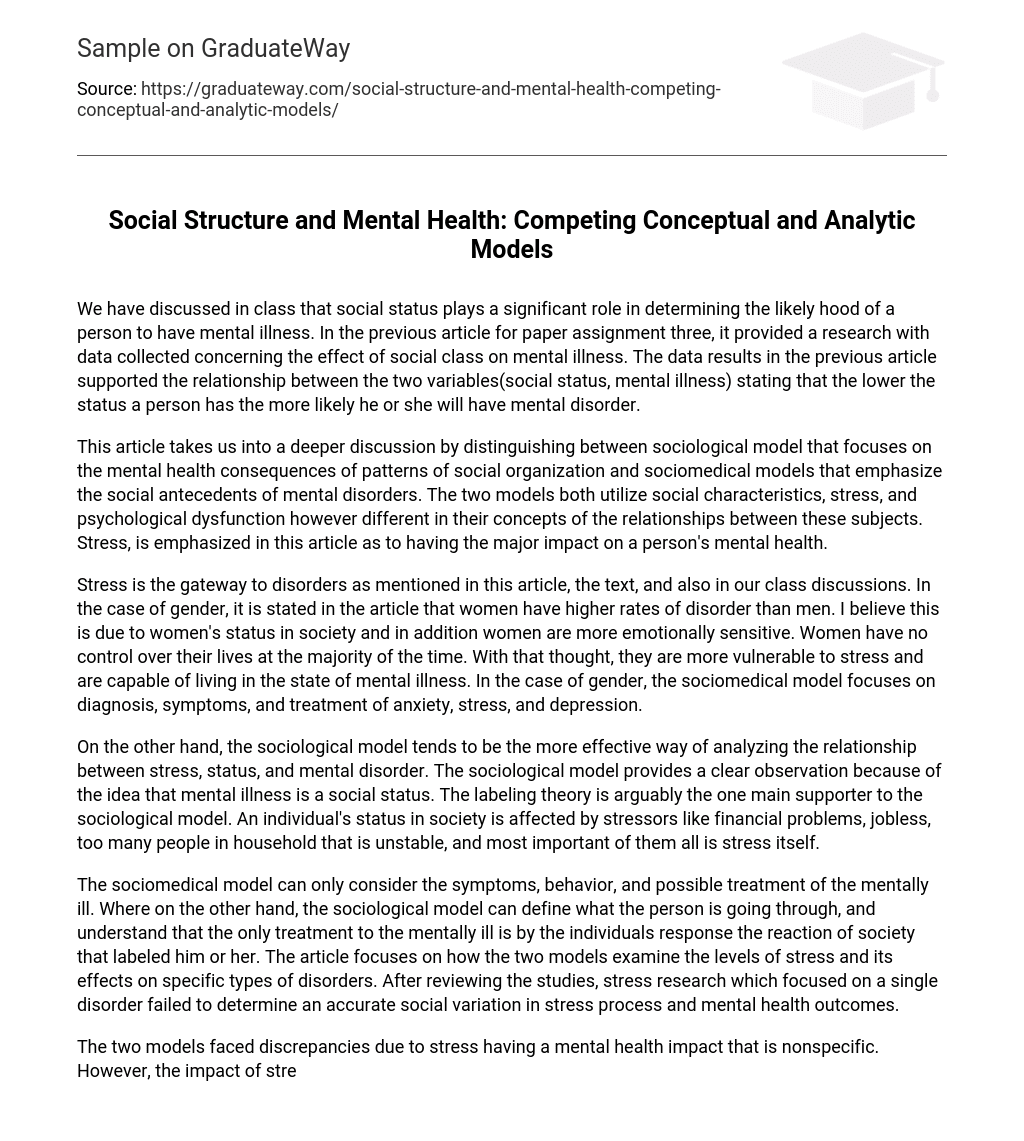In our class, we have discussed the influence of social status on the likelihood of individuals experiencing mental illness. The previous article for paper assignment three presented research findings that showed how social class impacts mental disorders. The results from this article supported the correlation between social status and mental illness, suggesting that individuals with lower statuses are more susceptible to mental disorders.
This article examines the distinctions between the sociological and sociomedical models. The sociological model concentrates on the impact of social organization patterns on psychological well-being, whereas the sociomedical models prioritize social factors preceding mental disorders. Both models take into account social characteristics, stress, and psychological dysfunction but they diverge in their understanding of how these topics are interconnected. Stress is highlighted as the primary contributor to an individual’s mental health in this article.
The article and class discussions primarily address the link between stress and disorders, specifically in women who have higher rates of disorder compared to men. This disparity may be due to societal status and heightened emotional sensitivity among women. Women often face feelings of powerlessness in their lives, making them more vulnerable to stress and mental illness. The sociomedical model focuses on analyzing the diagnosis, symptoms, and treatment of anxiety, stress, and depression from a gender perspective.
The sociological model is frequently regarded as a superior approach to comprehend the relationship between stress, status, and mental illness. It highlights that societal factors significantly influence mental disorders and emphasizes that these concerns are not solely personal matters. The labeling theory strongly endorses this model by proposing that various stressors such as financial problems, unemployment, overcrowded living conditions at home, and particularly stress can impact an individual’s social position.
The sociomedical model only addresses the symptoms, behavior, and potential treatment of individuals with mental illness. In contrast, the sociological model identifies the experiences and recognizes that the response of society, which labels the individual, is the only form of treatment for mental illness. The article discusses how both models investigate stress levels and their impacts on specific disorders. However, studies that solely focused on stress research for a particular disorder did not accurately determine the social differences in stress processes and mental health outcomes.
The two models experienced differences because stress had a non-specific impact on mental health. However, when considering gender, the specific impact of stress was identified. Therefore, it was concluded that the role of social factors in causing psychological disorders cannot be equated with the overall impact of these social factors on mental health. In our class materials, we also discuss these two models to understand their differences and relationship.
The sociomedical model and the medical model of psychiatry share the same priorities. The medical model of psychiatry uses medical concepts like symptoms, syndrome, disease, diagnosis, and illness to explain bizarre behaviors. Meanwhile, the Psychiatric Model consists of three aspects of mental disorder: internal dysfunctions, non-predictable or normal responses to specific events, and non-deviant behaviors.
The sociological model and the labeling theory are interconnected. The labeling theory explains how society constructs the concept of mental illness, based on societal reactions. Within the sociological model, stress is the determinant of an individual’s likelihood of developing a specific disorder. Both theories utilize social characteristics to form conclusions about various relationships.





